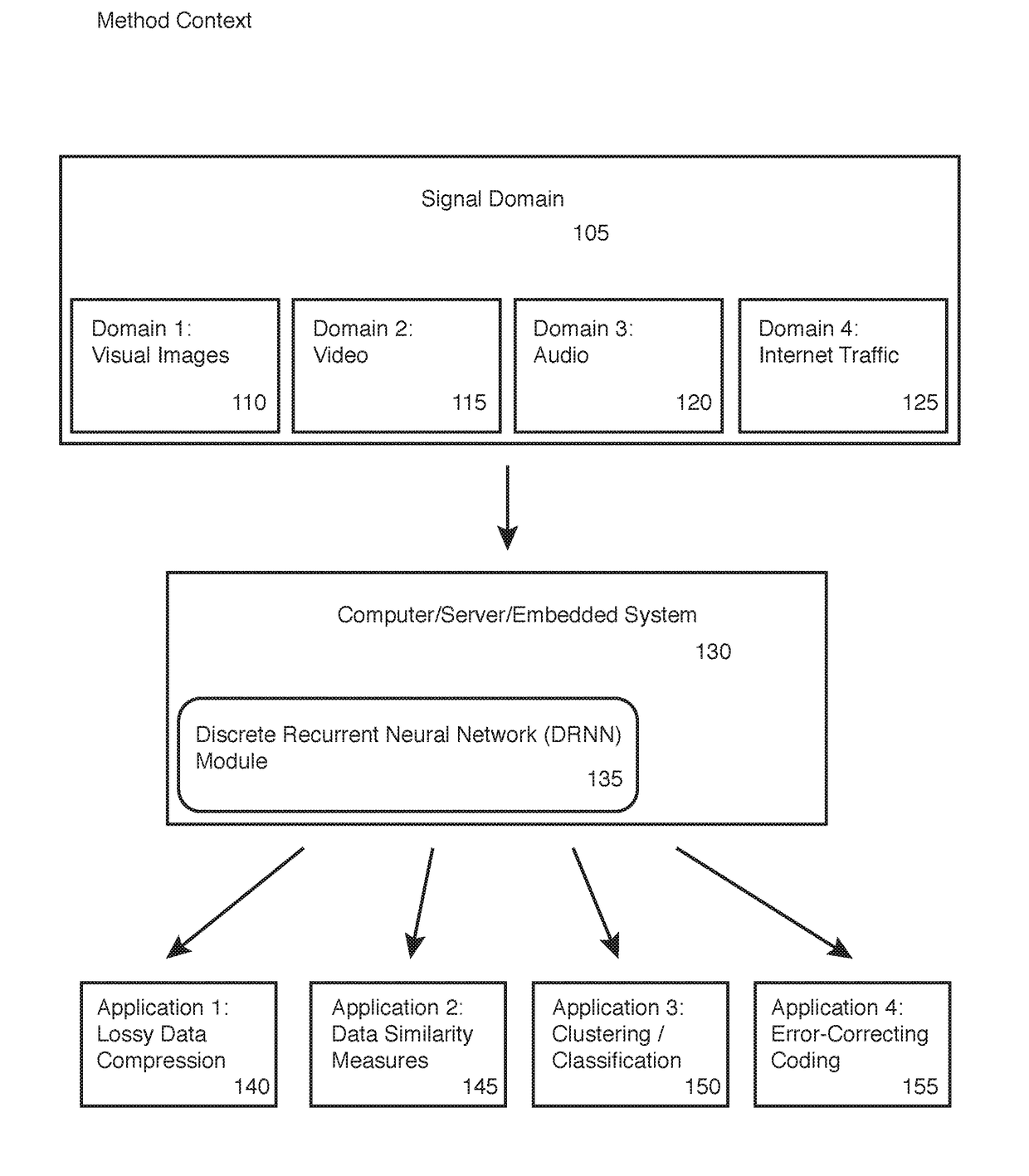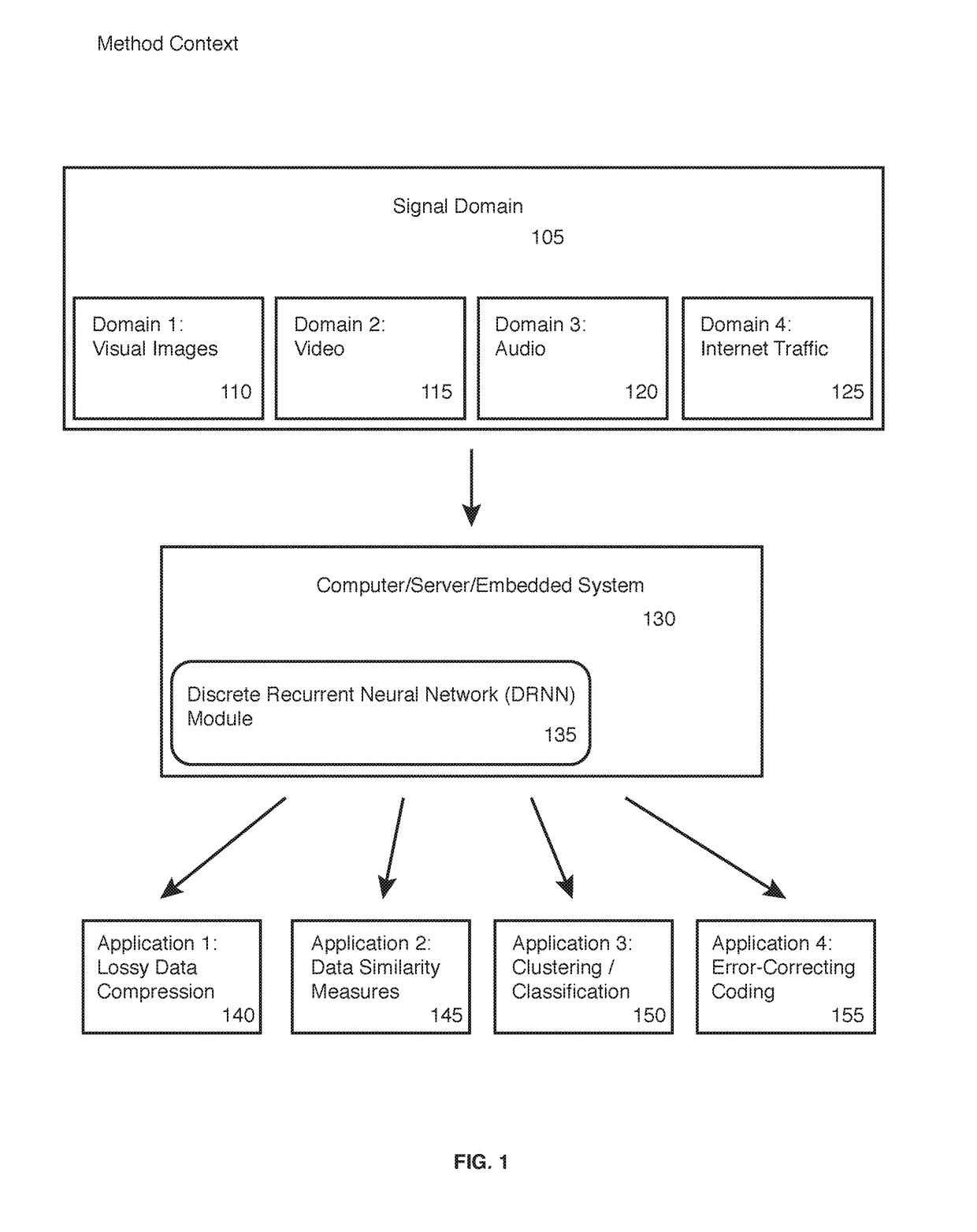Self-Organizing Discrete Recurrent Network Digital Image Codec
a discrete recurrent network and codec technology, applied in the field of discrete recurrent neural networks, can solve the problems of not learning structure from data in an unsupervised manner, unable to scale up to high dimensions, and the approach suffers from lack of scalability to high dimensions, so as to increase the memory capacity of these networks, reduce coding costs, and achieve sufficient expressive power
- Summary
- Abstract
- Description
- Claims
- Application Information
AI Technical Summary
Benefits of technology
Problems solved by technology
Method used
Image
Examples
Embodiment Construction
[0032]The present invention allows for a method to extract information out of signal domains and apply such knowledge to solve specific signal processing tasks of significant practical value.
[0033]Although the exemplary embodiments will be generally described in the context of software modules running in a distributed computing environment, those skilled in the art will recognize that the present invention also can be implemented in conjunction with other program modules for other types of computers. In a distributed computing environment, program modules may be physically located in different local and remote memory storage devices. Execution of the program modules may occur locally in a stan-alone manner or remotely in a client / server manner. Examples of such distributed computing environments include local area networks of an office, enterprise-wide computer networks, and the global internet.
[0034]The detailed description that follows is represented largely in terms of processes ...
PUM
 Login to View More
Login to View More Abstract
Description
Claims
Application Information
 Login to View More
Login to View More - R&D
- Intellectual Property
- Life Sciences
- Materials
- Tech Scout
- Unparalleled Data Quality
- Higher Quality Content
- 60% Fewer Hallucinations
Browse by: Latest US Patents, China's latest patents, Technical Efficacy Thesaurus, Application Domain, Technology Topic, Popular Technical Reports.
© 2025 PatSnap. All rights reserved.Legal|Privacy policy|Modern Slavery Act Transparency Statement|Sitemap|About US| Contact US: help@patsnap.com



